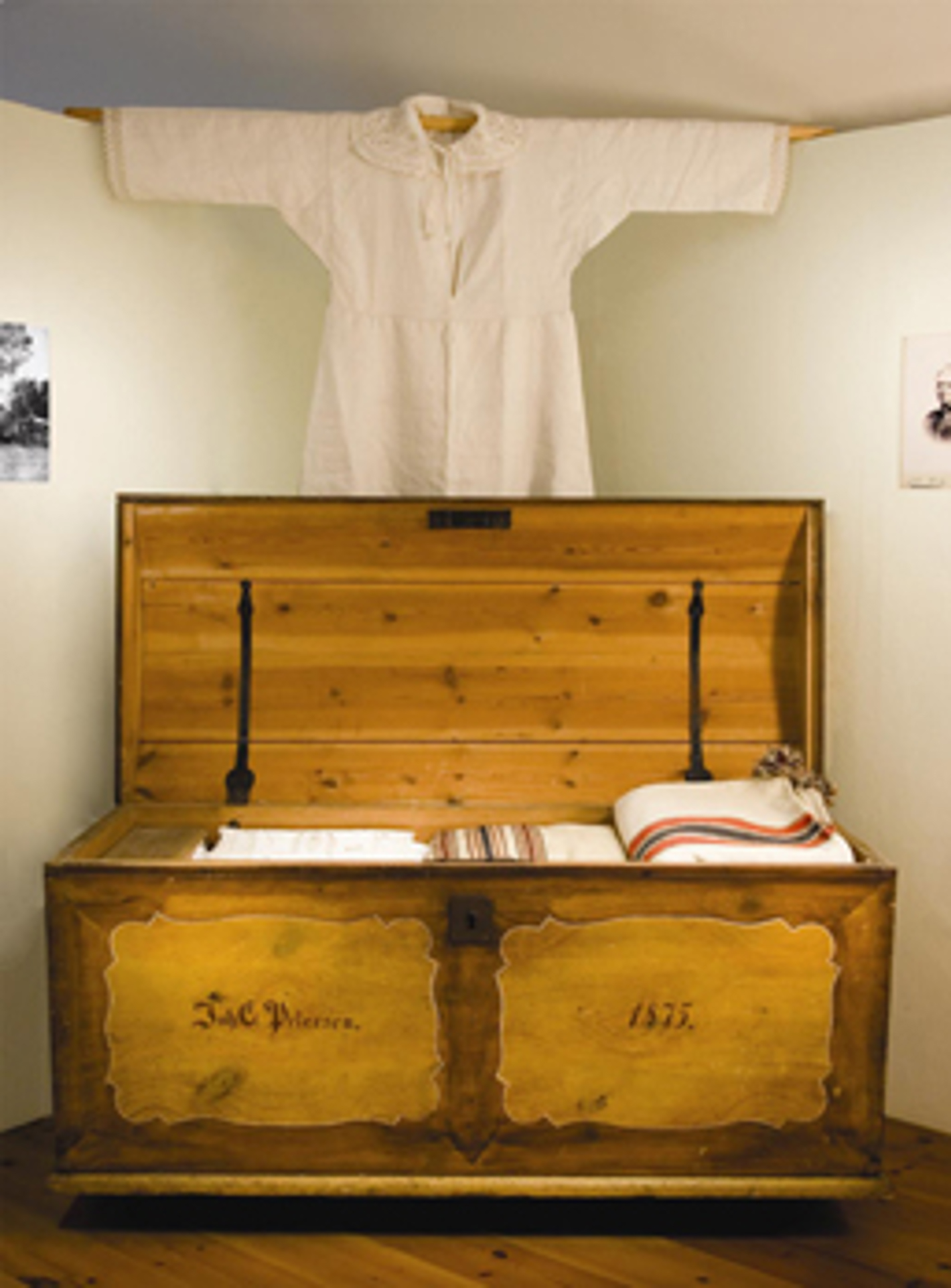Decoration
Hedebo Embroidery had a functional importance in the cottages and farmhouses. The white surfaces reflected the dim light of the tallow candles and contributed to the brightening up of the living room during the winter. Hedebo Embroidery was hung up to mark seasons and festive times. Thus long and richly embroidered decorative towels were hung up on the curtained bed or alcove, and pillows with Hedebo Embroidery intersections were placed so as to be seen in the opening of the drapery. The wall cupboard situated by the chair of the houseowner, at the top of the long table, had its doorposts decorated with special embroideries. The women’s shifts and the men’s shirts, which were used at festive times, had modest or considerable embroideries, especially on the collars and cuffs. The shirts were also often embroidered on the shoulder parts and alongside the front opening. During every-day life these embroidered textiles were kept safe in cupboards and chests in the upper room of the farmhouse, where they would be shown to guests.
Trousseau
A bridal chest filled with white linen, shirts, shifts, bolsters and rugs was a substantial part of the woman’s contribution to the future marriage and, at the same time, an expression of the future wife’s character and abilities. When the wedding date was set the bridal shirt had to be embroidered. Maybe the young but still unmarried woman thought about her future life with her husband to be in their common home, while stitching his shirt. The white Hedebo Embroidery represented great value in both labour and monetary terms. At the end of the 19th century, the bedclothes, linen and table linen of a farm household were valued for fire assesment purposes as equivalent to a herd of 16 head of cattle.
Sale
By the end of the 19th century, the traditional interior furnishings and textiles of peasant society had been greatly influenced by the fashion in the big city. This contributed to a change in the types of textiles which were decorated with embroidery. The decorative towels and ‘knædug’, used to decorate the stove's 'knæ', were replaced by tablecloths and embroideries for the sofa. The women cut collars out of shifts and seamed them onto dresses made of bought fabric. In the second half of the 19th century, skilled peasant women sold their Hedebo embroideries in Copenhagen and thus contributed to the economy of the farm or cottage. A large bedspread in “Udklipshedebo” style was bought by the Danish Folk Museum in 1896 for 300 kroner, which was equal to half a years salary for an unskilled worker.


